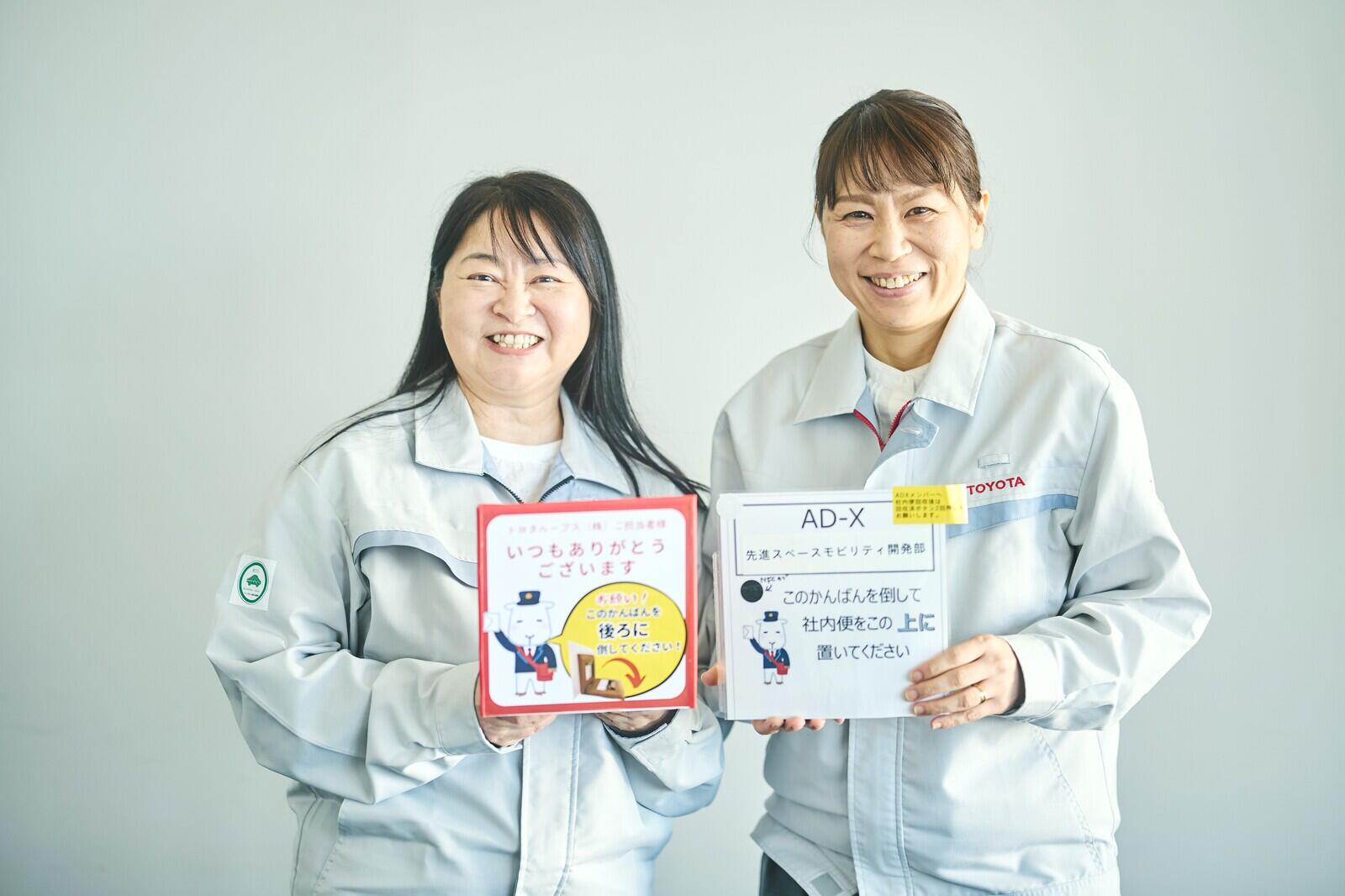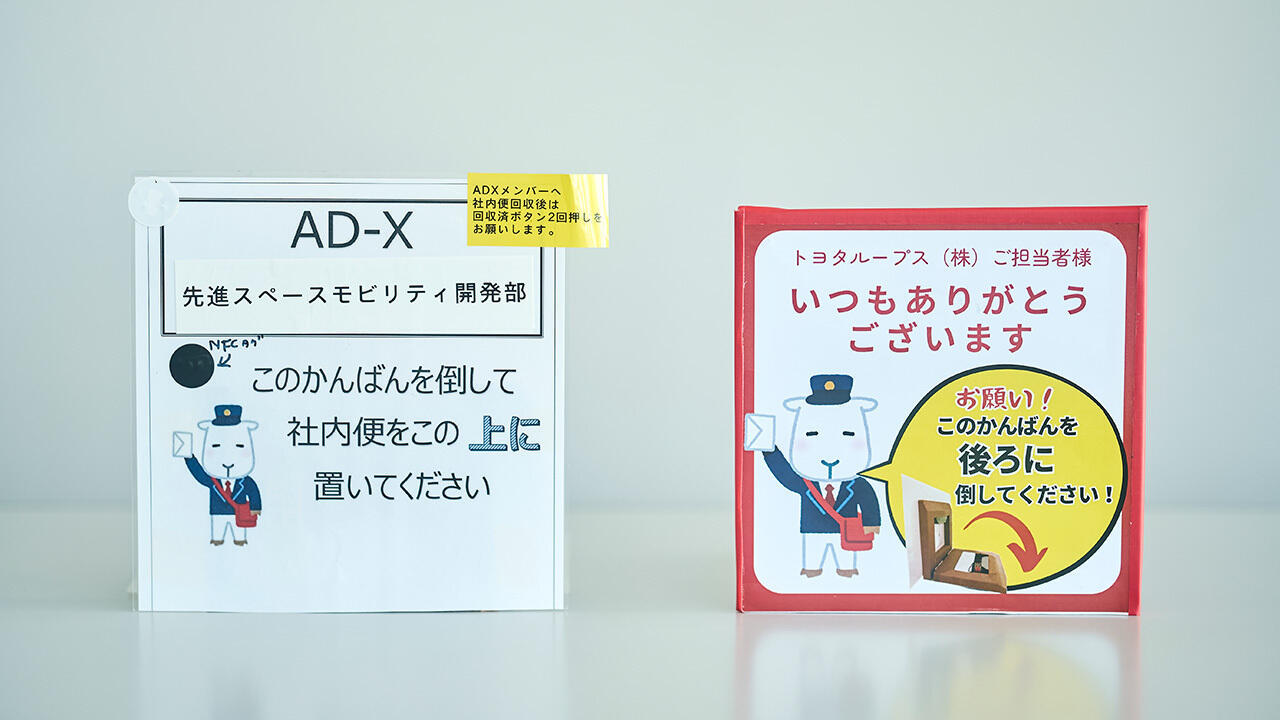
The Creative Idea Suggestion System makes work more fun and interesting. Toyota Times is showcasing a selection of top submissions from the system's seven-decade history. This article shines the spotlight on an idea that uses digital technology to notify employees about internal mail deliveries.

Pandemic highlights everyday inconveniences
At Toyota’s offices, internal mail is delivered to every floor at two set times each day. These items are often picked up by who distribute them to the intended recipients.
Takako Suzuki of the Advanced Space Mobility Development Division, which is developing the LUNAR CRUISER, recounts, “During the pandemic, I noticed that the only way to know if the mail had arrived was to check the cabinet. I used to do that when I passed by, but as soon as I started working from home more, I realized how inconvenient that was.”

Suzuki provides operational support for the project, while also working on DX-driven improvement and development .
She has also developed an ingenious idea for sending notifications via Teams when internal mail arrives.
A sign equipped with a sensor is set up on the delivery cabinet, and delivery personnel are asked to lay it flat before placing mail items on top.
Tipping the sign over triggers the sensor and sends a notification to the department’s Teams channel. To round out the routine, the person retrieving the mail stands the sign back upright.
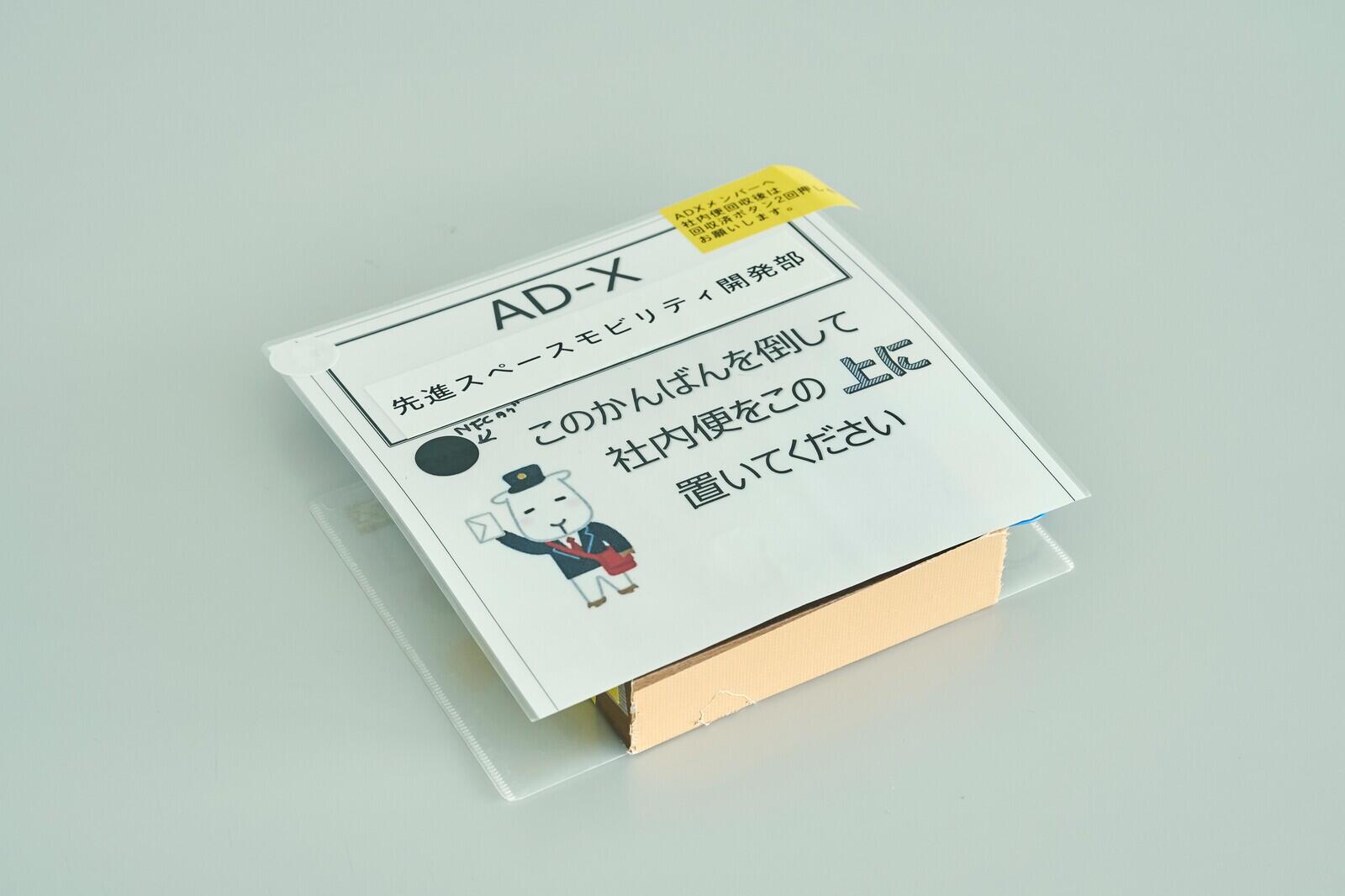
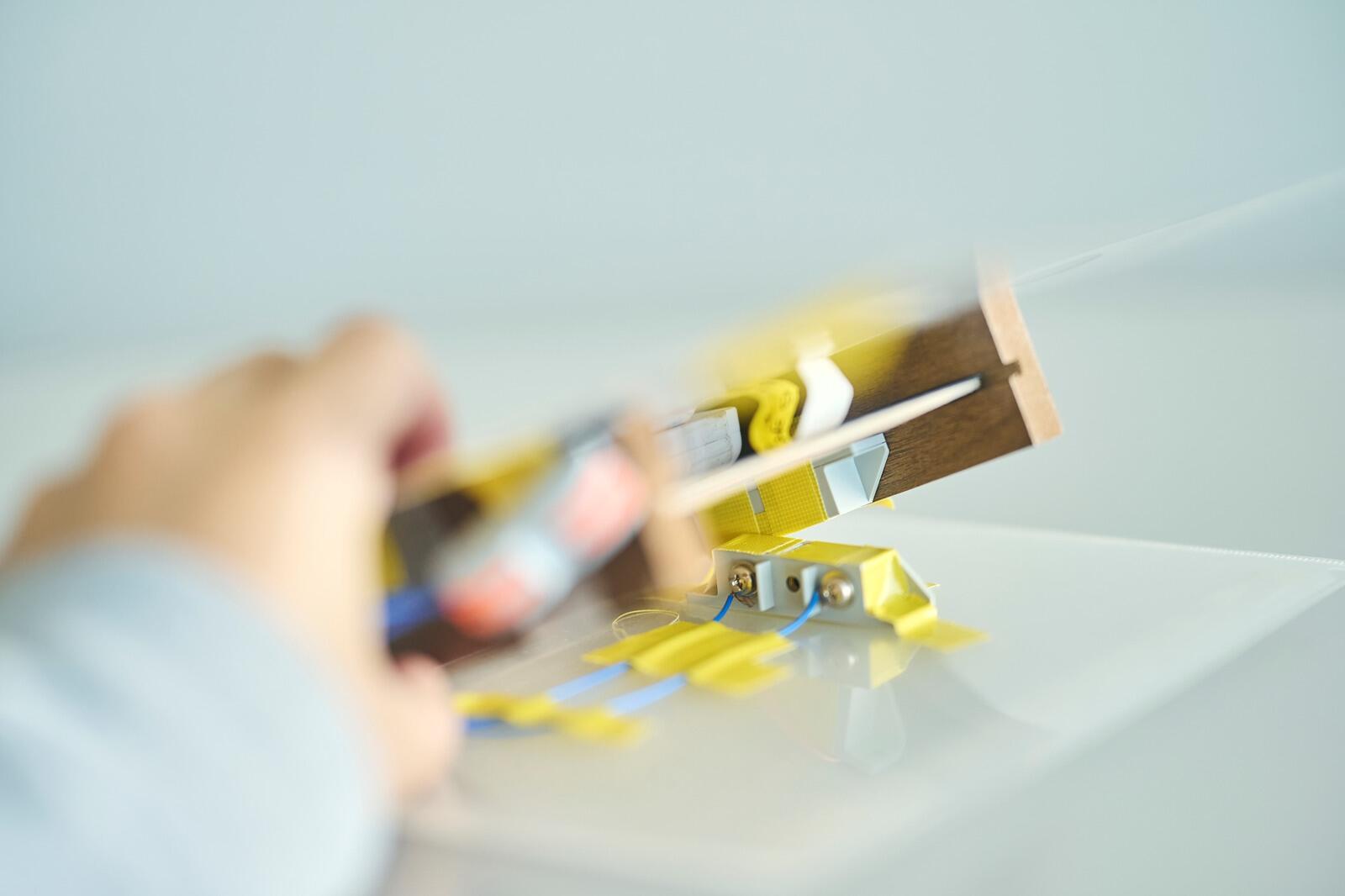
Takako Suzuki, Advanced Space Mobility Development Division
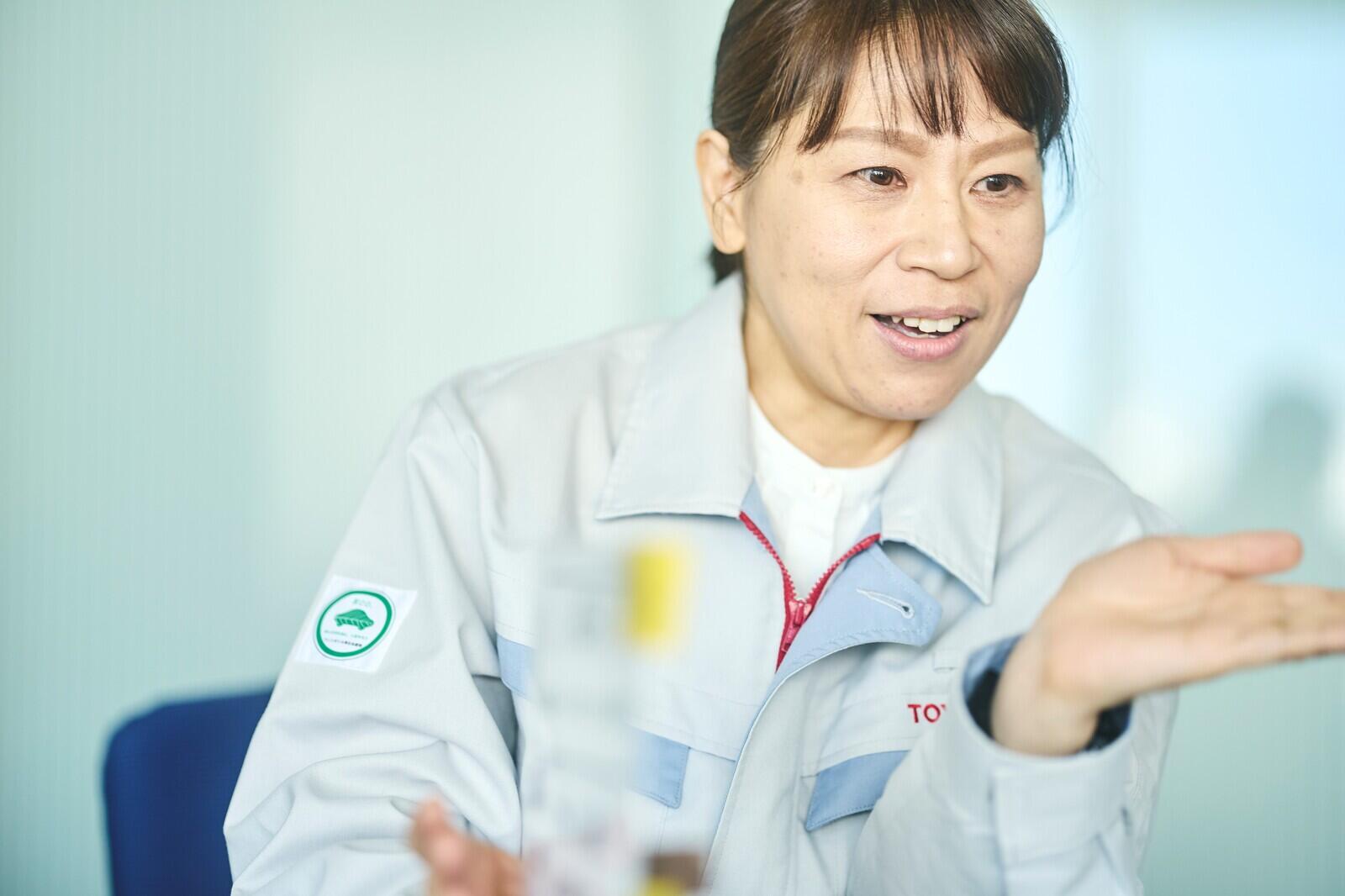
I have always loved turning ideas into reality. I enjoy hands-on work like sewing and programming. But my interest in technology only began five or six years ago, when I came across a book on AI.
I had actually been pondering the question of “How do we know when internal mail has arrived?” for about half a year. At one point, I attended a company AI workshop and shared the issue with other participants and instructors, who offered many ideas, including the use of image recognition.
However, our cabinet wasn’t near a power source, and it would have been difficult to set up a camera. Instead of going through the trouble of arranging equipment, I wanted to keep things as simple as possible.
After several months of mulling it over, Suzuki settled on using a Soracom accelerometer, inspired by a post on the D-ROOM community in Teams.
D-ROOM is a collective focused on providing spaces for learning, experimenting, and engaging with others, both in Toyota’s real-world facilities and via the Teams community. To help people try out their ideas, the group lends equipment and provides support by working through concerns together.
Takako Suzuki, Advanced Space Mobility Development Division
For the first prototype I used an accelerometer set up to send a notification when the sign was tilted. But it was a rechargeable sensor, so I had to keep coming into the office to charge it, which didn’t really feel like much of an improvement (laughs).
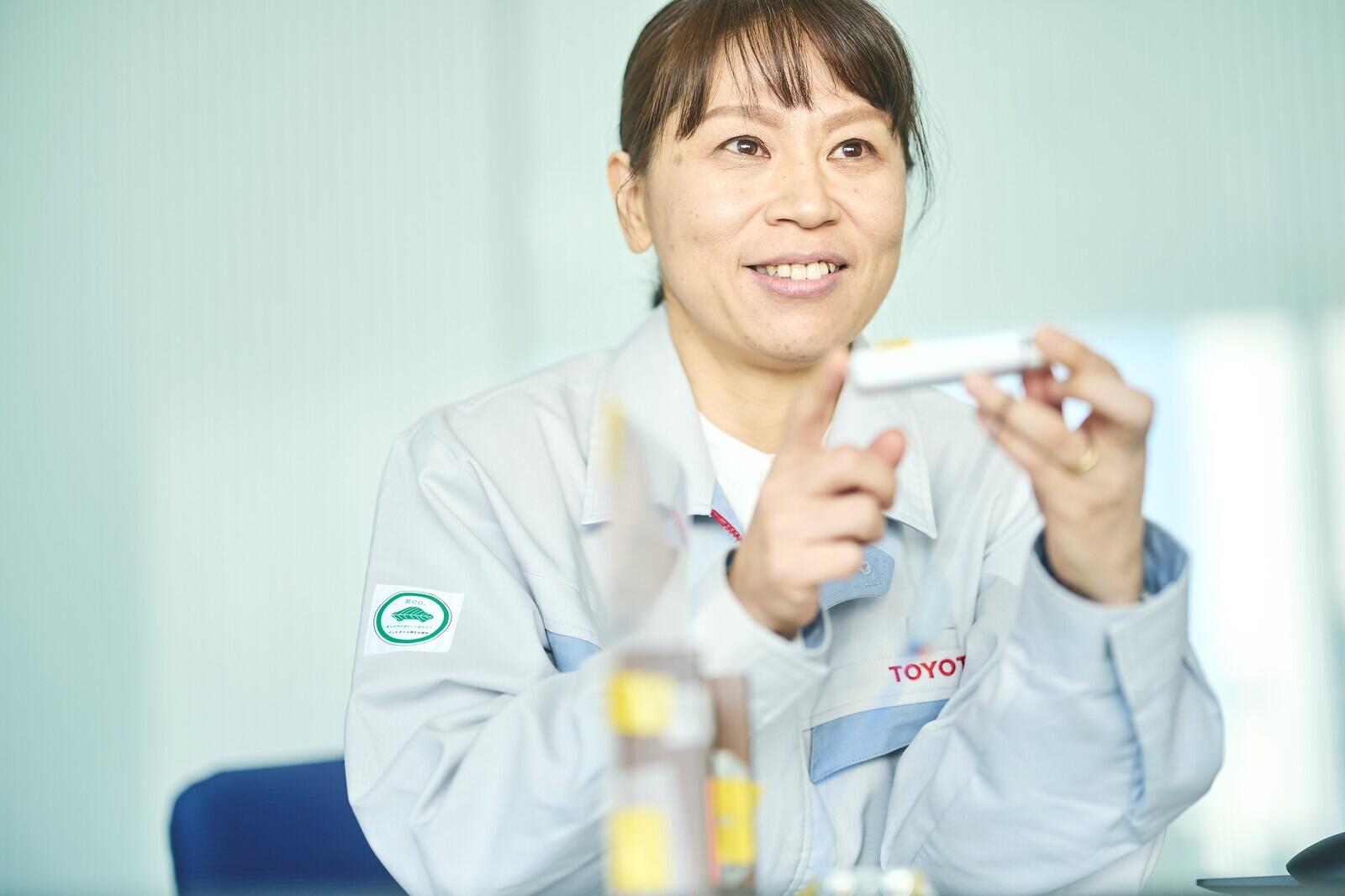
Then, D-ROOM introduced me to another sensor by Soracom that could run for six months or more on dry cell batteries. This sensor was button-operated, so initially I thought of having the delivery person press the button after placing the items inside.
When using the button, however, Suzuki felt that it was hard to tell whether you had really pressed it. So, she continued to make further improvements.
“I linked the Soracom sensor to a contact sensor so that it sends a signal out when the sign is tipped over. I also added a feature notifying us when the battery runs low.”
Eriko Kimoto of the Lexus Design Division was very impressed with this mail notification system. Upon learning of Suzuki’s idea, she reached out and asked whether she could copy it.
Eriko Kimoto, Lexus Design Division

At the time, I worked on the second floor, and the internal mail was delivered on the first floor. Sometimes I would go downstairs only to find that it hadn’t come yet, so for about five years I had been hoping that someone would just bang a drum or something when the mail arrived (laughs).”
Kimoto’s system adds an aesthetic element, with all the equipment neatly housed in a box. As you may expect from a design division, when the idea was raised various people pitched in, gradually refining it into the current form. Even the sign itself, originally white, was updated in the spirit of universal design to be more easily read by those with color vision deficiencies.

In our interview with Oyaji Kawai for the first article in this series, he made the following comments:
“When you start making improvements, it inevitably becomes a case of ‘now that we’ve come this far, let’s do a little more.’ At Toyota, that’s what we call ‘continuous kaizen.’”
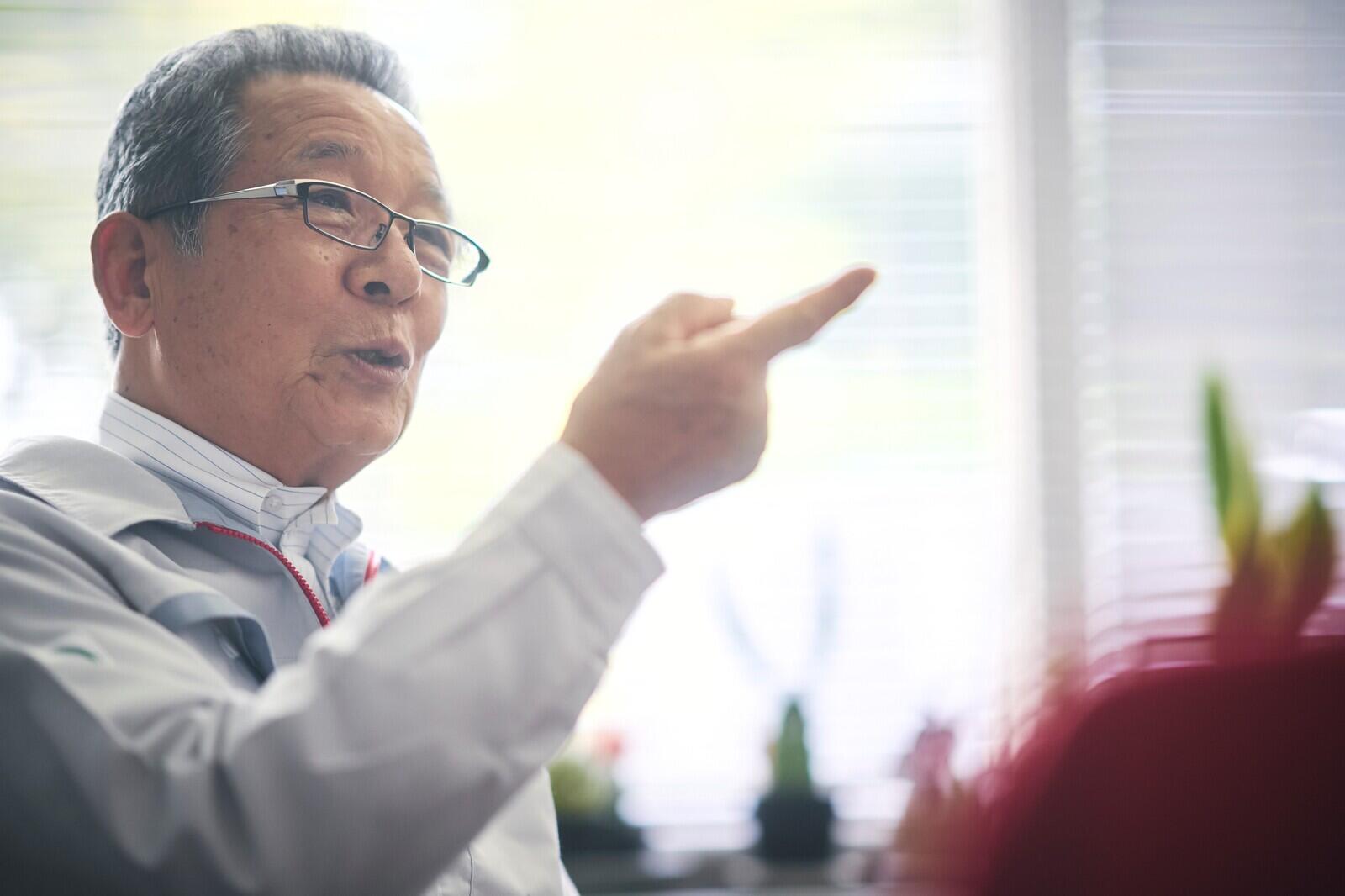
Motivated by gratitude
As the notification system’s originator, Suzuki is also continuing to make improvements. Let’s look at two such examples.
The first is a feature that lets users know who has picked up the delivered mail.
The notification message includes an “I’ll collect it!” button to be clicked by whoever goes to fetch the items. When they do, the system sends another message: “XX has picked up the mail. Thank you!”
This idea originated in the Kamigo Plant/Shimoyama Plant Engine Manufacturing Engineering Division.
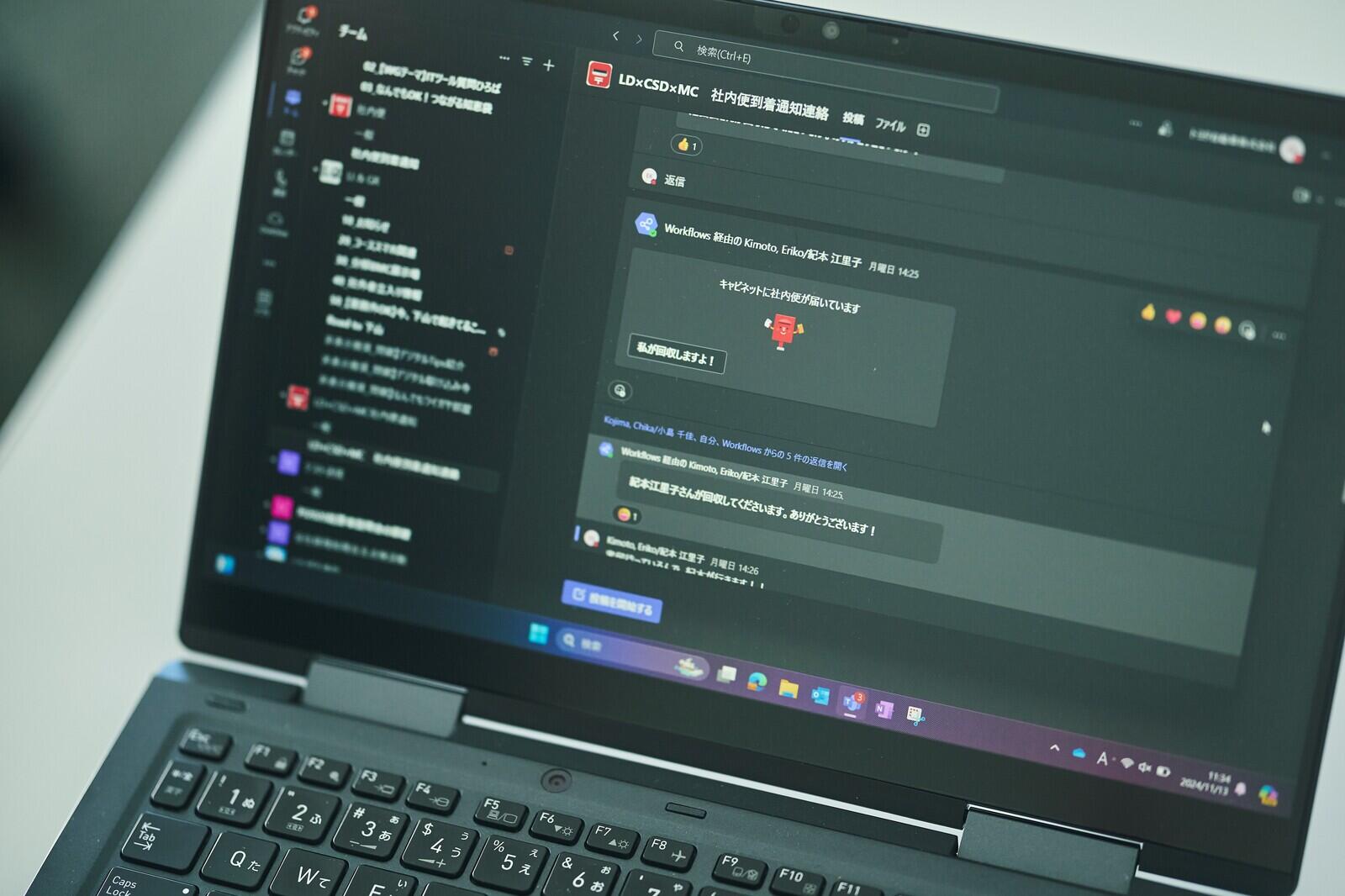
“Since adopting the sign system, we no longer need to assign people to be in charge of the internal mail,” says Suzuki. “The task is handled by whoever is available.”
The other addition is an app that allows staff who receive a delivery to send photos to team members easily. They simply launch the app, take a picture of a delivered item, and select the relevant person. With a single tap, the photo is sent alongside a notification. Astonishingly, this app is entirely Suzuki’s handiwork.
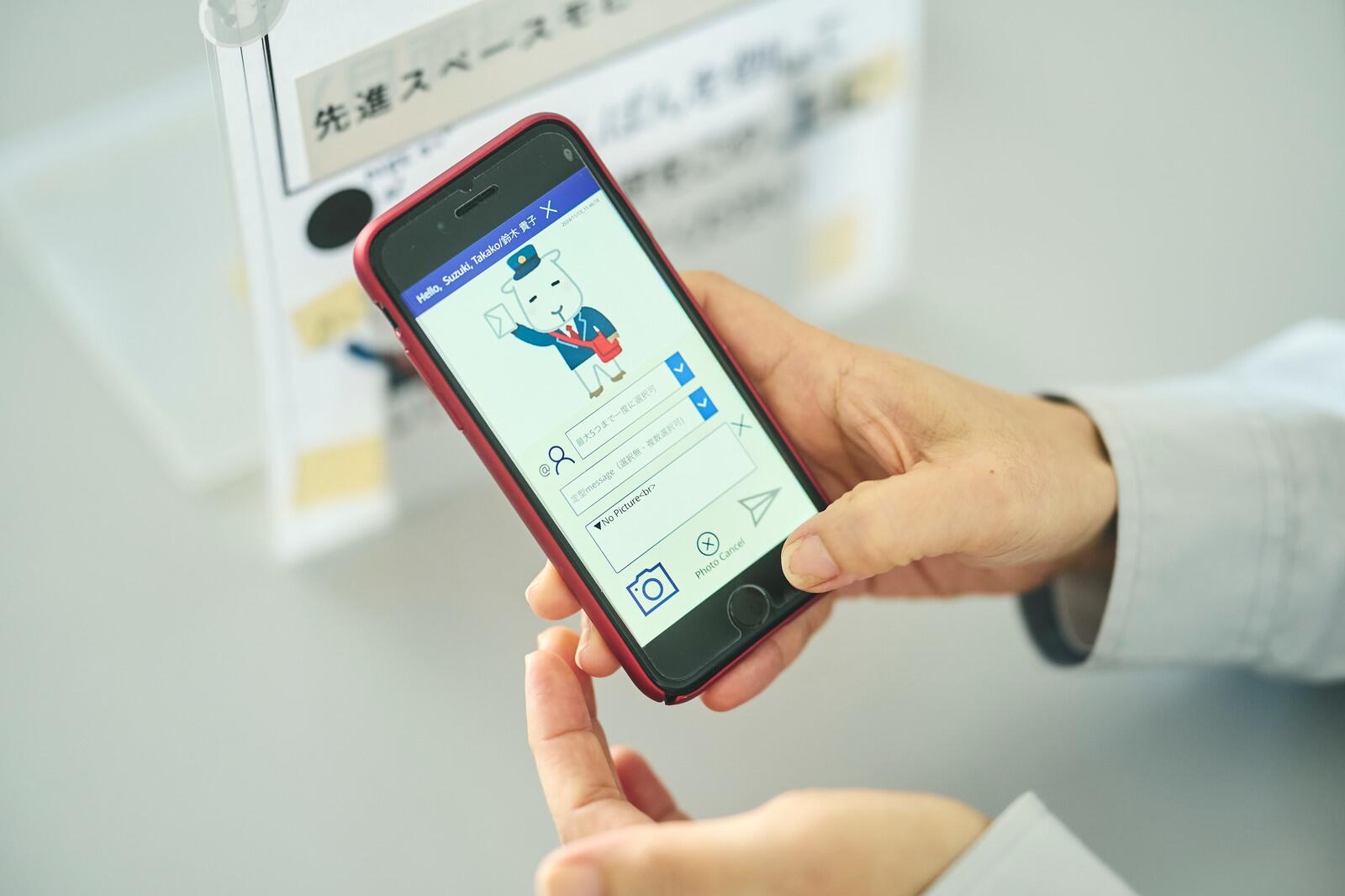
“Picking up the internal mail used to be the responsibility of operations personnel, but now we even have GMs and assistant managers saying, ‘Sure, let me take care of that.’ Even so, that nice ‘Thank you!’ message is enough to make me go ahead and do it myself,” notes Kimoto with a laugh.
As for monetary rewards, Suzuki received 2,000 yen for the basic notification system and further rewards each time she suggested the improvements introduced above. Kimoto also earned 2,000 yen for her efforts.
“I received 2,000 yen simply for copying,” says Kimoto. “Building and expanding upon someone else’s work, or adapting it for your department, is also recognized as a creative idea. In fact, imitation is encouraged.”
Creative ideas spur understanding of different roles
The two women shared the joys of developing the mail delivery notifications, as well as the appeal of the Creative Idea Suggestion System.
Takako Suzuki, Advanced Space Mobility Development Division
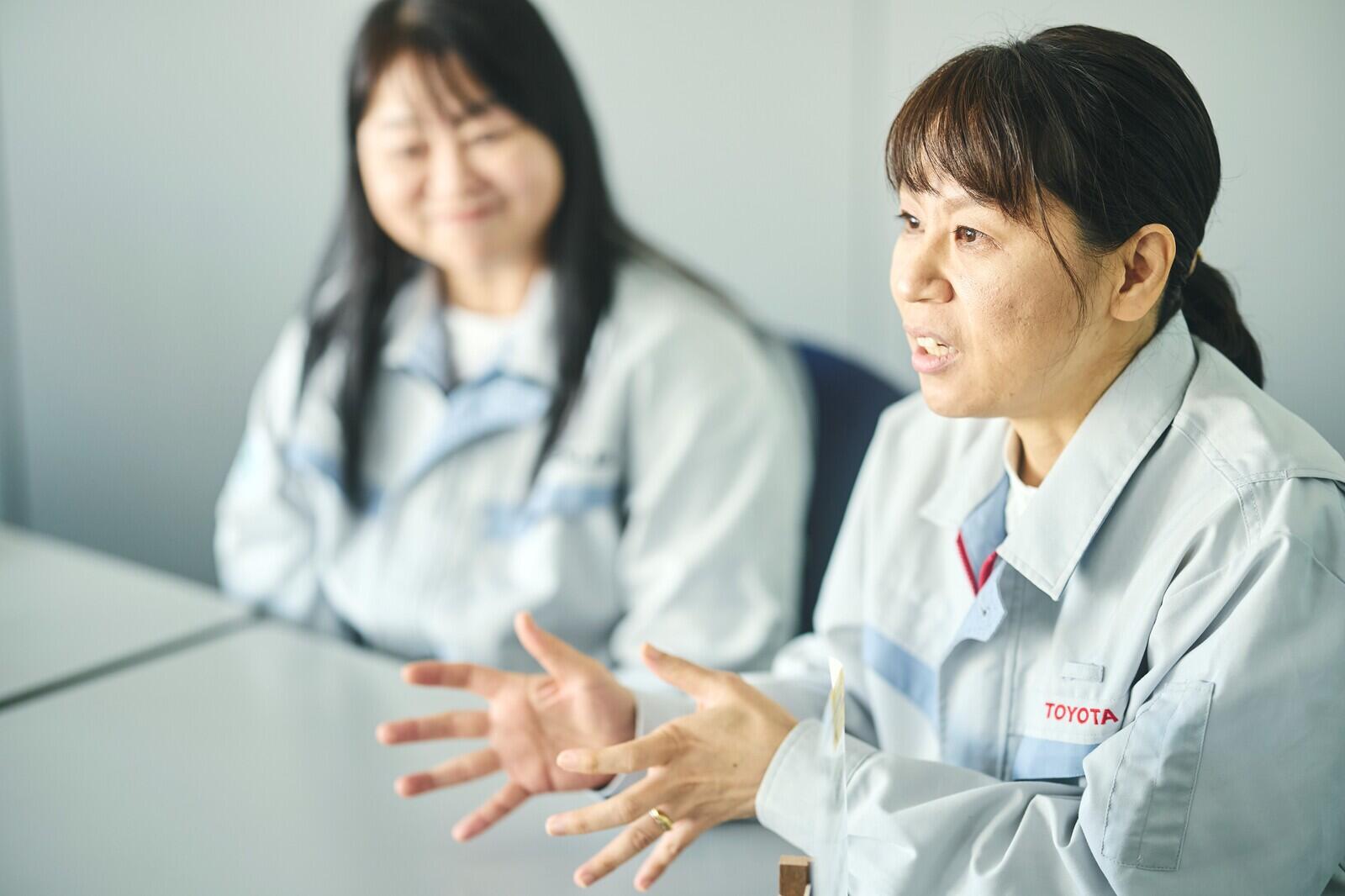
Recently, someone said to me, “Many people hadn’t been aware of who was handling the internal mail deliveries, and I’m glad that this approach has given everyone a better understanding.” I am pleased that I could help someone who was experiencing the same issues as me.
Also, since sharing this idea, the response from like-minded colleagues has been unbelievable. When I talk to people with the same interests, ideas pour out. This leads to ever-better solutions, for which we continue to be rewarded. The system creates a sense of teamwork, as we all work together aiming for bigger rewards.
Eriko Kimoto, Lexus Design Division
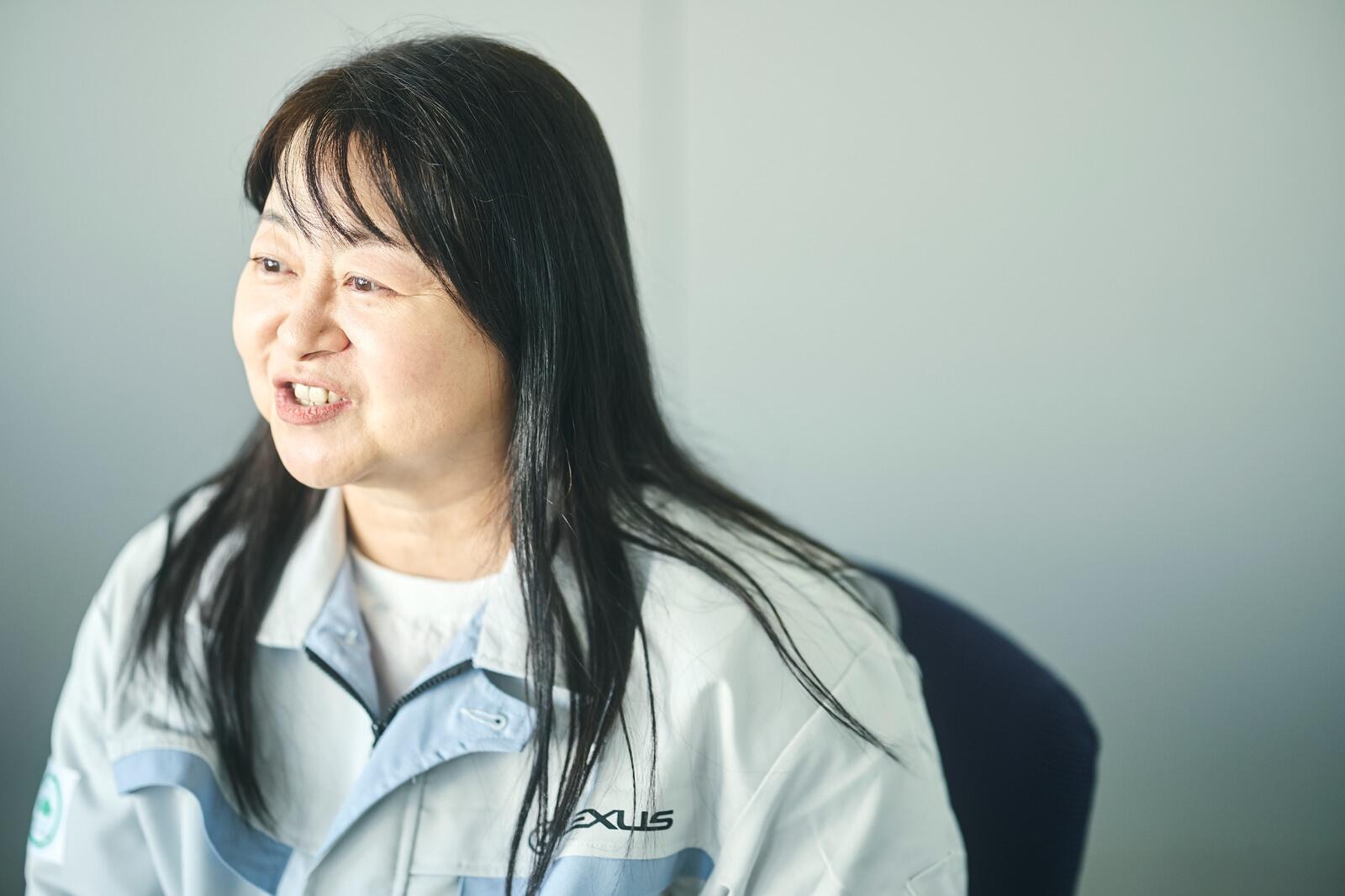
Getting managers to understand the work of operations personnel can be difficult. Suggesting creative ideas is a good opportunity to make them aware of what I do. What’s more, when I make a suggestion, all kinds of people offer advice, and before I know it, I am the one receiving suggestions. I think that’s wonderful.
Lastly, we asked the pair what kaizen means to them.
“I think it is about smoothing the connections between people, objects, and ideas. I am interested in seeing a world where everything is smoothly integrated.,” Suzuki answered.
Kimoto’s response was, “Making life easier for yourself, I would say. And in the process, hopefully you make other people’s lives easier as well.”
